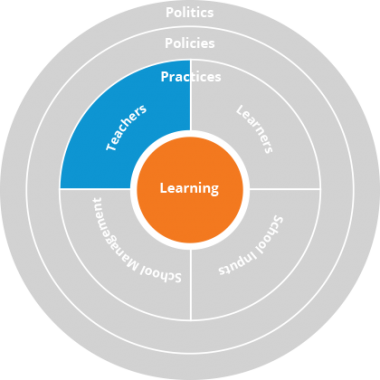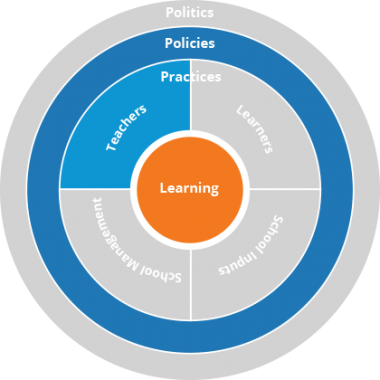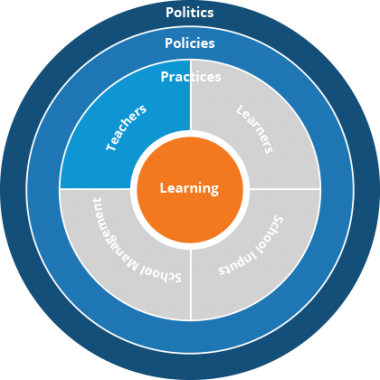Teachers
It is essential to put learning for all children at the center, as we have now committed to do with the SDGs. But learning itself is not actionable. To improve learning, we must consider all the school- and student-level ingredients that make learning possible. We think of these as the “service delivery” or “practice” indicators. Learning depends on having prepared, motivated, and well-supported teachers in the classroom engaging the students. To assess teaching quality, we measure its two main components: the presence of teachers and their teaching skills.
Practices
Teachers' Skills

Teachers - Policies
But we can’t stop at practices, we need to go beyond the school-level factors to think about the broader system that influences what educators do. Teachers are not acting in a vacuum. They are responding to the signals and incentives set by the system as a whole. For this, we look at the policies governing teaching practices. For teacher skills we measure policies related to four key areas—attraction, selection & deployment, support, and evaluation. On the other hand, for presence, we measure monitoring & evaluation and intrinsic motivation.
Practices
Teachers' Skills

Teachers - Politics
Finally, there is the political and bureaucratic environment in which these policies are created and implemented. Key areas include financing, characteristics of bureaucracy, impartial decision-making, mandates and accountability, and the existence or not of time-bound, concrete national learning goals.
Politics
Policies
Practices
Teachers' Skills
